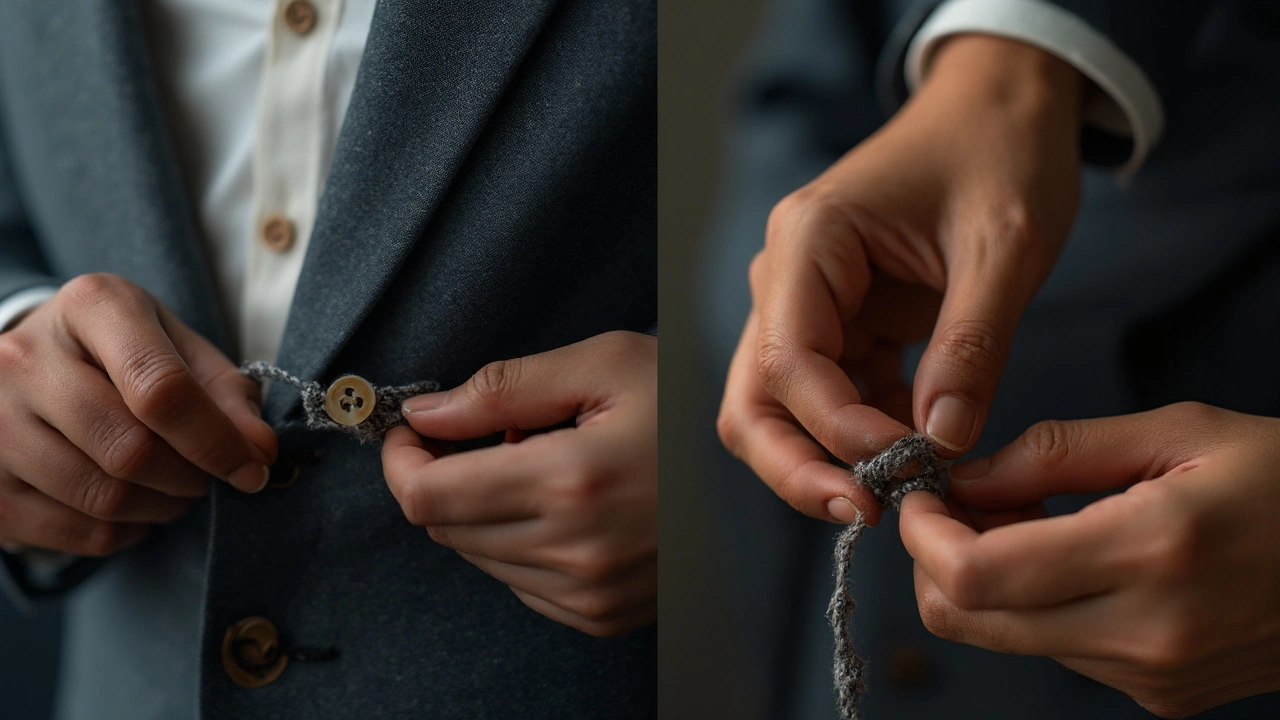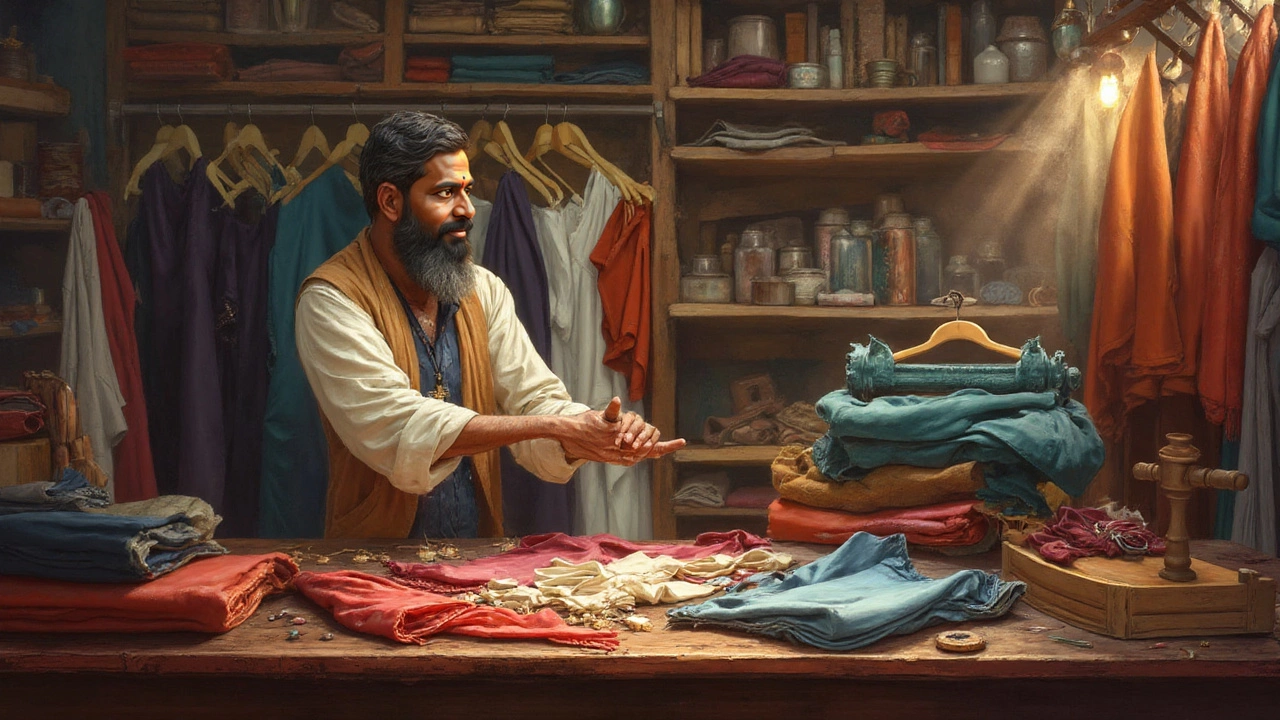How to Spot an Expensive Suit: Visual Clues, Details, and Real Life Tips

Could you walk into a room full of men in suits and pick out the guy who dropped three grand on his jacket from the ones who shopped the sale at a fast fashion store? A lot of people think the answer is always yes, but it’s not as easy as it sounds. Cheap suits are getting better at copying luxury looks, and price doesn’t always guarantee perfection. I’ve watched friends try to guess which of Lucas’s suits he bought on sale and which one he saved up months for, and the results are all over the place. But if you know what to look for, the little secrets of a well-made, expensive suit pop out at you like a hidden message. This isn’t just about labels—it’s about tiny clues hiding in plain sight. Let’s get into what makes expensive suits different and how you can tell the truth with a single glance (and sometimes, a quick touch).
What Sets Expensive Suits Apart: Beyond the Brand Tag
So, you see a sharp suit, and the label is nowhere in sight. What are you actually looking for? First, focus on the fabric. Expensive suits usually use natural fibers, like wool, silk, alpaca, or even mohair blends. High-quality wool—not the itchy, cheap stuff—has a softer finish, lasts longer, and isn’t as prone to pilling. If a jacket feels almost buttery to the touch, that’s a good sign it’s made from the kind of fabric brands brag about in their ads. On the flip side, budget suits often use polyester or poly blends, which can look okay at first but start to shine weirdly under bright lights and crease badly.
The canvas construction is one of the biggest giveaways. Most high-end suits have a floating canvas—a layer sewn between the outer fabric and lining. This canvas lets the jacket mold to your shape, like your favorite jeans over time. Cheaper suits are glued (fused), and they never really break in; they just kind of sit there. A floating canvas also means the lapels roll gently instead of looking pressed flat. If you’re brave (or know the owner well), pinch the fabric between the button and lapel—if you can feel a “third layer” moving, that’s the canvas.
Good suits almost always have real horn, mother-of-pearl, or corozo nut buttons, not generic plastic ones. Peek inside, and you’ll find hand stitching on expensive jackets, running along the lapel’s edge and sometimes on the inside seams. The stitching will look slightly uneven but tight, which means an actual tailor spent time on it. Budget options? Perfect, tiny machine stitches meant to hide mass production.
You’ll even notice a difference with pocket details. High-end suits have functional, or “surgeon’s”, cuffs—meaning the cuff buttons can actually unbutton—while lower-priced suits usually just sew the buttons onto the sleeve.
| Feature | Expensive Suit | Cheap Suit |
|---|---|---|
| Fabric | Wool, Cashmere, Silk blend | Polyester, poly blends |
| Button Material | Horn, Corozo, Mother-of-pearl | Plastic |
| Lining | Bemberg or silk | Cheap synthetic lining |
| Construction | Half/full canvas, hand finished | Fused, machine made |
| Sleeve Buttonholes | Functioning surgeon’s cuff | Non-functioning buttons sewn on |
The Telltale Fit: Why Expensive Suits Flatter Better
You can’t fake a good fit. The difference can be night and day, even if a cheap jacket is your size. High-end suits are cut with more precision and usually tailored for an individual (or at least ‘finished’ by an expert with you in mind). They hug the shoulders without making you look stiff. The chest area curves naturally, letting you move your arms without the jacket jumping up your spine. Good tailors use something called 'drape'—a subtle effect where the fabric creates a gentle V-shape down the torso. Even the back vents sit perfectly flat instead of popping open over your behind.
Try sitting down in both an expensive and a bargain suit. A high-quality jacket will move with you, not ride up. The armholes? They're cut higher, so you can reach for your glass or shake a hand without the sleeve dragging your whole shoulder up. Cheaper suits make a lot of compromises—they may be cut too big or too boxy, with massive shoulders and a potato sack body to ‘fit everyone.’
Pants are the same story. Fine suits come with unfinished hems, so a tailor can get the length just right. Mass market suits come pre-hemmed—if you’re not the exact height they had in mind, the break at your shoe will look awkward. Properly tailored, expensive trousers don’t twist or bunch around your thighs or knees when you move; they hang straight, with a nice line from waist to cuff.
Here's an interesting tidbit: A study by a bespoke London tailor found that 83% of people could identify who wore a custom versus ready-to-wear suit purely from how it draped and fit—without touching the fabric or seeing the price tag.

The Little Details Most People Miss
Fancy suits sneak extra care into the tiniest details. The inside lining is usually silk or Bemberg—a super-smooth Japanese fiber that feels light and cool, even if you wear the jacket all day. Budget suits? Cheap poly satin that makes you sweat. If you flick the collar up, expensive suits have a felt ‘melton’ under-collar with a dash of color or design—just for a hidden splash of joy, or maybe to show off if you’re feeling bold.
Take a good look at the label itself. Big famous houses like Zegna or Tom Ford use embroidered or woven labels, never a heat-stamped or printed tag. Flip up the inside breast pocket: if you see a slip of cloth with a hand-written code, the suit was probably made-to-measure or bespoke. Serial numbers, tailor’s signatures, or order dates are a badge of pride for true craftsmanship.
Even the vents (the little slits at the back of the jacket) tell a tale. Expensive European suits usually boast double vents that help the jacket sit neatly when you stand and move. A single vent is an American tradition and often shows up on cheaper models because it’s easier to sew at scale. Buttons to fasten the jacket? They shouldn’t rattle, wobble, or be unevenly sewn. It takes time, but high-end suits get this tiny thing right.
And don’t forget those pockets—expensive suits keep the side pockets sewn shut until you buy them, to keep the lines crisp. Most guys don’t even cut them open once they own the suit.
Common Myths About Expensive and Cheap Suits
Let’s clear up a few things that confuse people. Price isn’t always a guarantee of quality. Some designer brands charge crazy sums for flashy patterns, but their suits are still fused and mass produced. At the same time, quiet Italian tailors can deliver top-level jackets at a lower price, simply because they don't spend on marketing or international showrooms.
Another thing: 'Super 150s' or 'Super 180s' wool—those fancy numbers on tags—don’t always mean ‘better.’ They refer to how fine the wool is, but ultra-fine fibers wear out faster and wrinkle easily. Sometimes a sturdy Super 100s wool will look and last longer, even if it’s less 'exclusive.'
Not every guy in a cheap suit looks bad. I’ve met men who can make a $200 suit seem like a million bucks because they get the fit tailored perfectly and keep it pressed, clean, and lint-free. On the other hand, I’ve seen luxury suits worn so badly they might as well be pajamas.
The country of origin isn’t the whole story either. Sure, Italy and England have a reputation, but some of the best suit fabrics are woven in Japan or Scotland. Skill matters more than the sticker in the collar.

How to Choose a Suit That Looks Expensive (Even If It Isn’t)
Alright, maybe you’re not ready to plunk down four figures. No problem. Focus on expensive suit details, even if you’re shopping mid-range. Look for jackets with a bit of natural fabric—at least wool in the blend. Hold it in your hand: does it feel smooth, not shiny or plasticky? Check for half-canvas construction, not glued—brands like SuitSupply or Spier & Mackay offer this at reasonable prices.
Always, always get the jacket and pants tailored, even if you only adjust the length and bring in the sides a bit. That will do more for your look than the label ever could. Replace plastic buttons with horn or corozo resin—tailors charge a little extra but it’s worth it. Leave those pockets sewn shut and use a lint roller. Take care with the way you hang and press the suit, and it’ll hold its shape and color for years.
Notice how the shoulders sit. No bulges or dents. Shoulders are tough to fix, even for a pro. So if the suit fits there, you’re golden. The lapels shouldn’t flap loose, but glide across your chest with a gentle roll. Don’t buy into every trend; classic colors like navy and charcoal never go out of style and always look sharp.
There’s a trick to double-checking—snap a photo of yourself in the suit with your phone and look at it in different lights. Cheap blended fabrics tend to shine white under flash, while pure wools and silks keep a soft, matte finish.
If you feel confident in what you’re wearing—whether it’s a tailor-made wonder or something whipped into shape by your local alterations shop—people will spot that glow from a mile away. In the world of suits, attitude and attention to detail matter way more than the price tag sewn inside your collar.